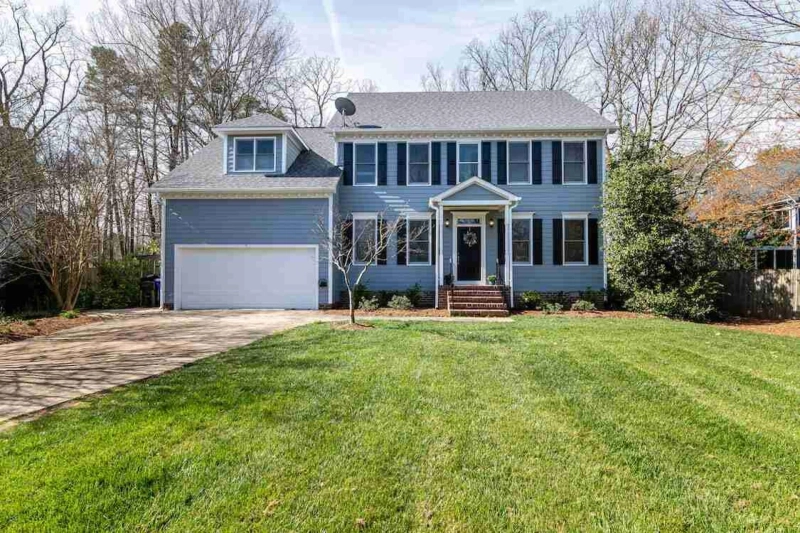Choosing the right siding option for your home is a crucial decision. Siding enhances your home's curb appeal and protects it from the elements. Among the various options available, horizontal and vertical sidings are popular choices for homeowners.
Each style has unique advantages and aesthetic appeal, which is why it is easy to get confused when choosing between the two for your home. This blog post will explore the differences between horizontal and vertical siding to help you make an informed decision for your home. Keep reading to learn more.
1. Aesthetic Appeal: Horizontal Elegance vs. Vertical Grace
Horizontal siding is known for its classic and timeless look. It provides a traditional appearance that suits various architectural styles, from colonial to ranch homes. On the other hand, vertical siding offers a more modern and contemporary feel.
It can elongate the appearance of your home, making it look taller and more majestic. Consider the architectural style of your home and your personal preferences when deciding between these two options.
2. Durability and Weather Resistance: Horizontal Stability vs. Vertical Strength
Both horizontal and vertical sidings come from durable materials like vinyl, fiber cement, or wood. However, their orientation affects their resistance to specific weather conditions. Horizontal siding is excellent at repelling water, making it a suitable choice for areas with heavy rainfall.
On the other hand, vertical siding offers superior resistance against wind damage. Consider your local climate and weather patterns to choose siding that can withstand the elements prevalent in your area.
3. Maintenance: Horizontal Simplicity vs. Vertical Accessibility
Maintenance plays a significant role in the longevity of your siding. Horizontal siding is relatively easier to clean due to its flat surface. However, it may be more prone to accumulating dirt and debris in the horizontal grooves.
Vertical siding, with its smooth surface, is easier to clean, requiring less effort and time. Additionally, vertical siding is less susceptible to damage from lawnmowers and other ground-level activities, making it a practical choice for homes with busy outdoor spaces.
4. Installation: Horizontal Ease vs. Vertical Precision
Installation complexity varies between horizontal and vertical siding. Horizontal siding is generally easier and quicker to install due to its straightforward orientation. It requires less precision and skill, making it a cost-effective option for homeowners.
Although slightly more complex to install, vertical siding offers more design versatility. You can install it in various patterns, such as board and batten or panelized designs, adding a unique touch to your home's exterior.
5. Cost Considerations: Horizontal Affordability vs. Vertical Investment
The cost of siding materials and installation can significantly impact your budget. Horizontal siding is often more affordable than vertical siding, making it a popular choice for budget-conscious homeowners.
While relatively more expensive, vertical siding provides a distinct visual appeal that can enhance your home's overall value. Consider your budget constraints and long-term investment goals when deciding between the two options.
6. Environmental Impact: Horizontal Sustainability vs. Vertical Eco-friendliness
In today's eco-conscious world, considering the environmental impact of your choices is essential. Both horizontal and vertical sidings are available in eco-friendly options, such as recycled materials or sustainable wood sources.
Research the environmental certifications and ratings of the siding materials you are considering to make an environmentally responsible choice for your home.
The Bottom Line
Choosing between horizontal and vertical siding ultimately depends on your personal preferences, budget, and the specific needs of your home. Evaluate the aesthetic appeal, durability, maintenance requirements, installation complexity, cost considerations, and environmental impact to make an informed decision.
Consult with siding experts and consider getting quotes from reputable contractors to explore the available options thoroughly. Weighing these factors can help you select the siding style that complements your home.
Leading Siding Contractors in Boston
ProShield Exteriors is your reliable siding expert when it comes to enhancing your home's beauty and protection. Contact them today for a free consultation and let their experienced team guide you in choosing the ideal horizontal or vertical siding tailored to your needs. Elevate your home's appeal with ProShield Exteriors!
About the Author
The author is a passionate home improvement enthusiast and experienced content writer. With a keen eye for detail and a deep understanding of architectural aesthetics, they enjoy exploring the nuances of exterior design. Through their engaging articles, they aim to empower homeowners with valuable insights and knowledge, guiding them in making informed decisions about their homes.



